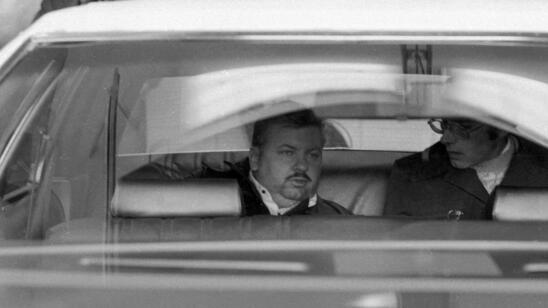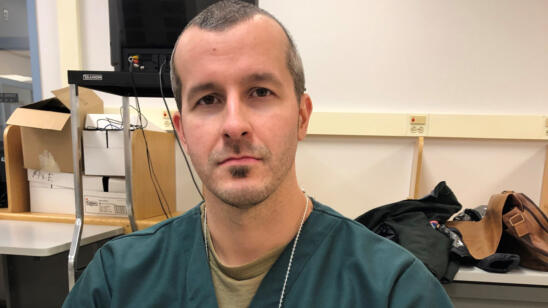Warning: The following contains disturbing descriptions of violence, including sexual violence. Reader discretion is advised.
John Wayne Gacy, a successful businessman from the Chicago suburbs, moonlighted as a children’s entertainer who went by the names “Pogo the Clown” and “Patches the Clown.” He was also convicted in March 1980 of murdering 33 boys and young men, making him the worst serial killer in American history at the time.
But it wasn’t just the number of victims that made Gacy’s crimes so haunting. It was the gruesome manner with which he committed the murders: luring children into his home, binding and raping them, strangling them to death and then burying them throughout his property.
For his crimes, Gacy was sentenced to death. His execution, carried out in May 1994, attracted enormous crowds.
[Watch Monster in My Family: Killer Clown: John Wayne Gacy on A&E Crime Central.]
The Final Weeks of Gacy’s Life
According to Karen Conti, Gacy’s death-row attorney, Gacy wasn’t too worried about the lethal injection awaiting him.
[Stream Invisible Monsters: Serial Killers in America, about John Wayne Gacy, Jeffrey Dahmer and other serial killers, with no sign in required in the A&E app.]
“He never expressed concern about his death,” Conti tells A&E True Crime. “I didn’t sense he even realized it was going to happen.”
Instead, Conti says, in the months leading up to his execution Gacy was far more preoccupied with money matters.
The state of Illinois had sued Gacy for money the killer had earned from various revenue streams while incarcerated. Among them: artwork he’d produced (including self-portraits as Pogo the Clown) and a 900 number, in which a pre-recorded Gacy argued his innocence to the paying caller. According to the state, Gacy was fiscally responsible for covering his incarceration. But Gacy wanted to leave his earnings for his family.
Eventually, the state’s civil litigation case against Gacy was thrown out. And as the weeks passed toward his impending execution, Conti got to know Gacy better.
Despite his ghastly crimes, Gacy “was an amusing character,” Conti says. “He had a pen pal who said she was in love with him. I said, ‘John, are you going to marry that woman?’ He says, ‘No way. That woman has three children and they’re all in the penitentiary. You think I’m going to marry into a family like that?'”
The Final Day of Gacy’s Life
For his execution, Gacy was flown by helicopter from Menard Correctional Center—in downstate Illinois, where he’d been incarcerated for 14 years—to Stateville Penitentiary, just outside of Chicago.
A Stateville prison spokesman told The New York Times that Gacy was “chatty” during his last day of life and made easy small talk, discussing the prospects of the Chicago Cubs, among other things. For his final meal, Gacy ate fried chicken, fried shrimp, french fries and fresh strawberries.
Conti says in the hours before his death, “he didn’t strike me as somebody who had a few hours left to live. He didn’t want to talk about it—he wanted to socialize with the people who were visiting him for the last time. He was pleasant.”
Among those visitors, though, the mood was decidedly somber.
“It was extremely emotional. It was traumatizing for the people who loved him. His neighbors who’d lived near him were there. They adored him—even after all those years,” Conti recalls. “It was surprising to see that outpouring of support from so many people who wouldn’t admit it to the public.”
Among the prosecutors who’d worked to case, the mood was more festive. William Kunkle, the chief deputy state’s attorney who tried the case, remembers going to a celebratory pre-execution dinner with fellow attorneys. They had barbeque.
The atmosphere resembled the lead-up to the 1989 execution of fellow serial killer Ted Bundy, where law enforcement, college students and others around the country celebrated with cookouts.
“I asked for the invitation” to the execution, Kunkle tells A&E True Crime. “I think any prosecutor who seeks the death penalty should have the guts to be there and see it…and I wanted to be sure he was dead. As a personal matter.”
The Final Moments of Gacy’s Life
Shortly before midnight, Gacy was brought from his holding cell to the execution chamber. Large groups of demonstrators—both for and against the death penalty—had gathered outside. Kunkle remembers the pro-capital punishment demonstrators singing the pop song, “Na Na Hey Hey (Kiss Him Goodbye)” so loudly that it could be heard from the execution building.
Kunkle sat in the front row. Conti tried but failed to secure an invitation to the execution itself, something she, on reflection, is glad to have missed.
Some have speculated that Gacy’s last words were “Kiss my ass.” Other contemporaneous reports suggest that Gacy’s final words pointed the finger back at the state of Illinois for murdering him. But Kunkle claims that no words were spoken.
Shortly after midnight on May 10, 1994, Gacy was given a three-drug lethal injection: The first drug, sodium thiopental, put him to sleep. A clog in the I.V. line delayed the injection of the second drug, pancuronium bromide, for approximately 10 to 20 minutes. The third drug, potassium chloride, stopped his heart. Gacy was pronounced dead at 12:58 a.m.
For Conti, Gacy’s death was a difficult moment in her life.
“I came to know John Gacy. I came to advocate for his life, and I lost everything,” she says, noting that she lost clients and received death threats, hate mail and reams of bad publicity for taking the case. “It wasn’t a friendship, really, because he was a shell of a person—he was a sociopath. But when you know somebody and you have a connection with somebody…they’re a part of your human race. It’s not normal to kill. What Gacy did was not normal. It was predatory and animalistic. But the government planning to do that is also wrong. And it affects you as a human being.”
Related Features:
John Wayne Gacy’s Childhood: ‘Killer Clown’ Serial Killer Was Victim of Abuse
John Wayne Gacy, Jeffrey Dahmer and Others: Ranking Serial Killers on a Scale of Evil


